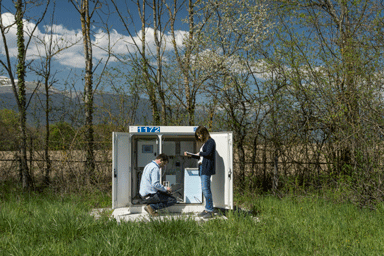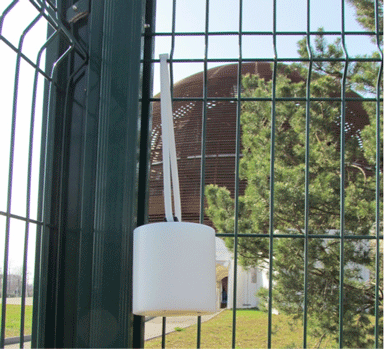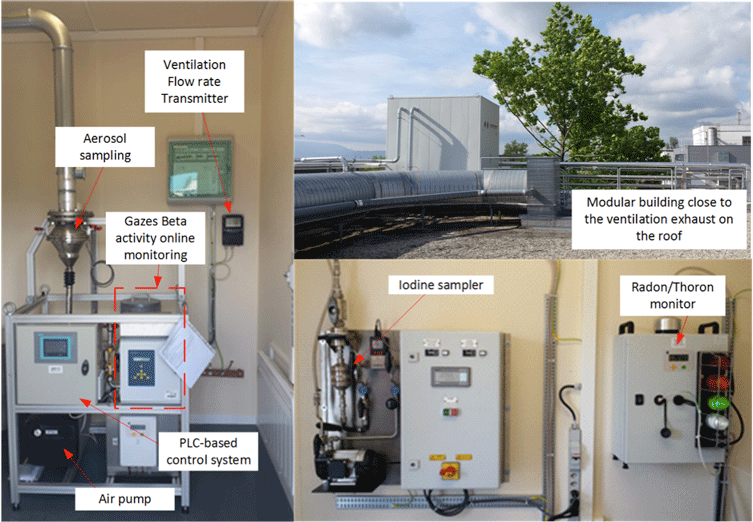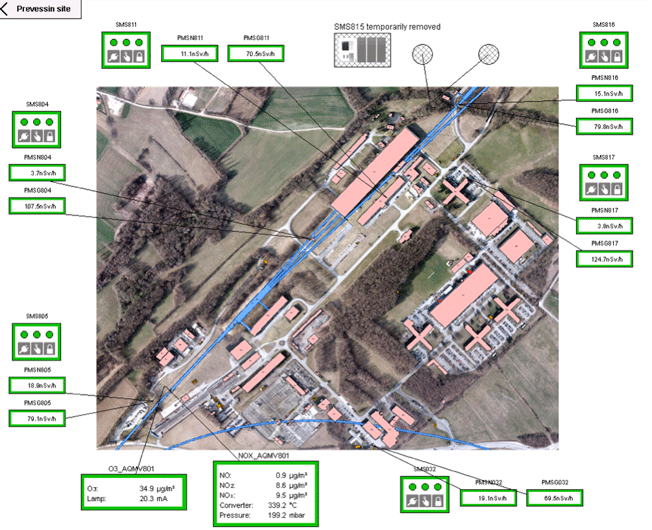Continuous Environmental monitoring
The monitoring stations combine specific instruments, dedicated electronics, and communication systems to visualize predefined parameter values through a monitoring system that manages online display and data archiving. Alarm thresholds are set for each parameter; exceeding these thresholds triggers intervention by the HSE-ENV unit and, in some cases, by the CERN Fire and Emergency Service.
Currently (July 2025), 640 environmental parameters from the 130 monitoring stations are continuously visible on the monitoring system and are saved. These environmental parameters are as follows:
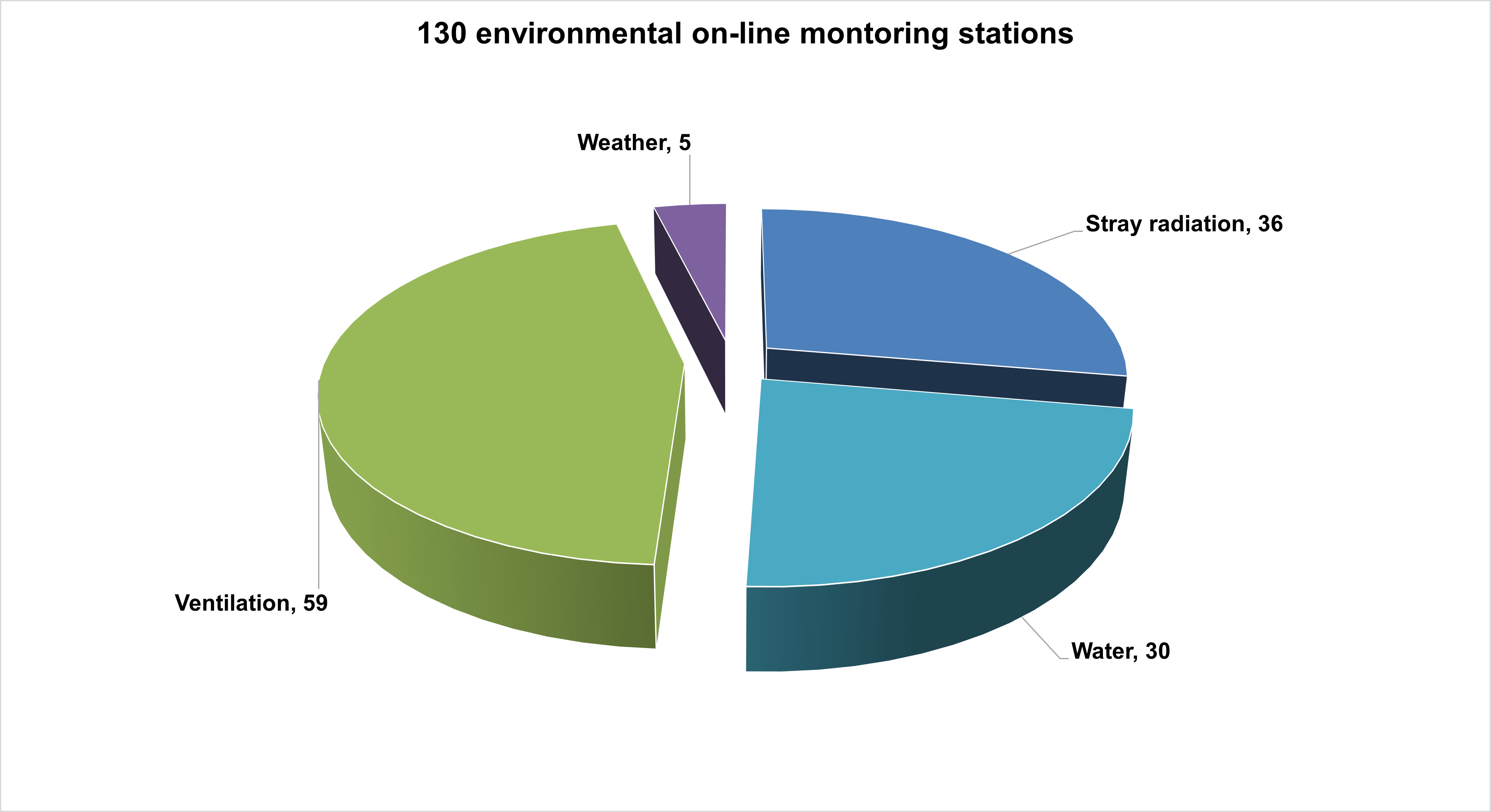
Stray Radiation (Gamma and Neutron)
Stray radiation comes from high-energy particle beams that can produce secondary particles such as photons, muons, and neutrons, which may eventually end up in the environment. This scattered radiation, which ceases when CERN's accelerators are shut down, is added to the omnipresent natural radiation. CERN has 36 live scattered radiation monitoring stations spread across the various sites. This network is supplemented by passive dosimeters (thermoluminescent dosimeters, TLDs) that are changed and measured quarterly to monitor the level of scattered radiation.
.
|
|
|
|
Configuration of a stray radiation monitoring station |
Thermoluminescent detector dosimeter (TLD) |
Air Monitoring (Alpha and Beta Radioactivity)
The facilities associated with the accelerators, which also include the experimental halls and transfer tunnels, require continuous ventilation and air renewal, particularly in enclosed areas such as tunnels. Atmospheric releases from the ventilation vents are continuously monitored by online gas emission monitoring systems. The parameters monitored are short-lived radioactive gases (11C, 41Ar, etc.). The live monitoring system collects an air sample from the ventilation outlet via a sampling line, with a flow control to adjust the gas volume.
|
|
|
|
A ventilation monitoring station situated on a roof near the ventilation exhaust. |
Supervision synoptic of the south part of the Prévessin site. |
Waste water (temperature, pH, conductivity, turbidity, presence of hydrocarbons, foam, flow rate, and gamma emitters)
Water is primarily used on CERN sites for cooling purposes, but is also used for more common uses, such as sanitary and industrial applications.
There are two separate water collection networks at CERN:
- the site drainage network, which receives cooling, meteoric, and infiltration water,
- and the sewerage network, which receives sanitary and industrial water.
Effluents entering the drainage network are discharged from CERN sites into local waterways in a controlled manner. The water quality monitoring program at CERN includes continuous monitoring of gamma-emitting radionuclides and physicochemical parameters such as temperature, pH, turbidity, conductivity, and the presence of hydrocarbons or foam.
Meteorological conditions (precipitation, wind speed, azimuth)
Meteorological parameters are monitored using several weather stations that record temperatures, heat fluxes, and wind speeds and directions. The recorded parameters are used to calculate dispersion coefficients for atmospheric releases, according to widely accepted standards.
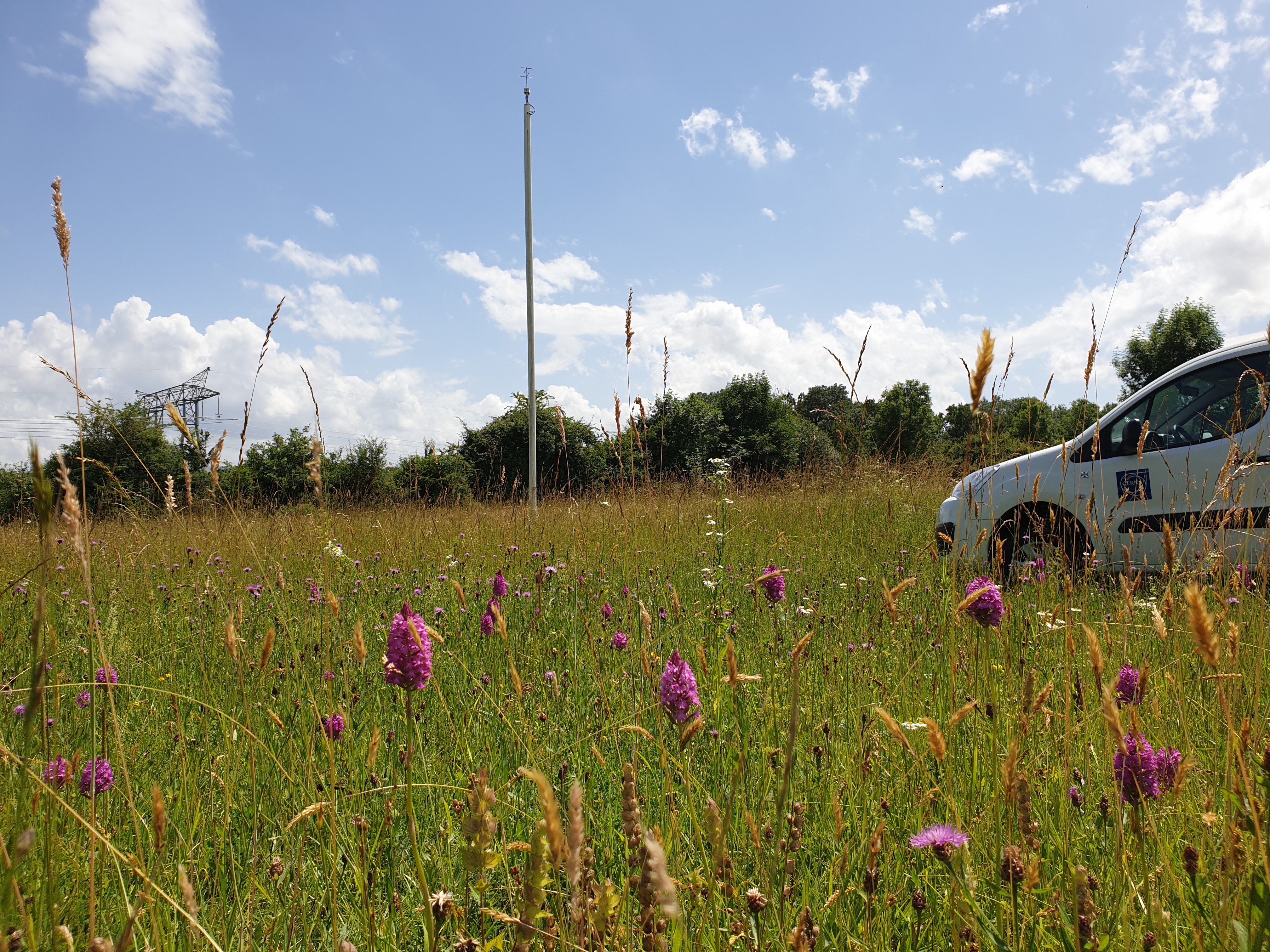
|
|
Meterological station |

